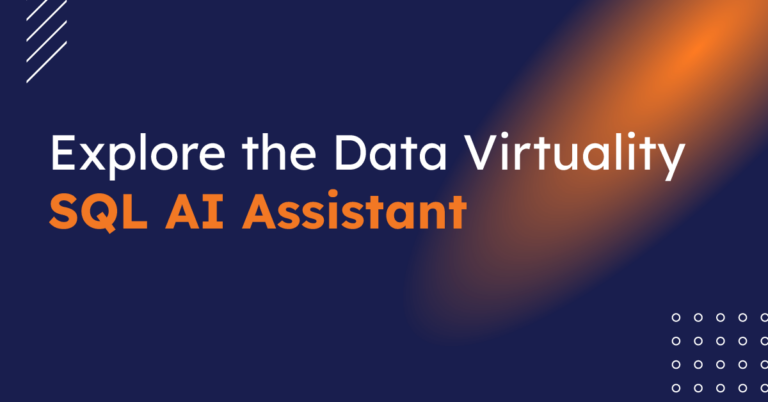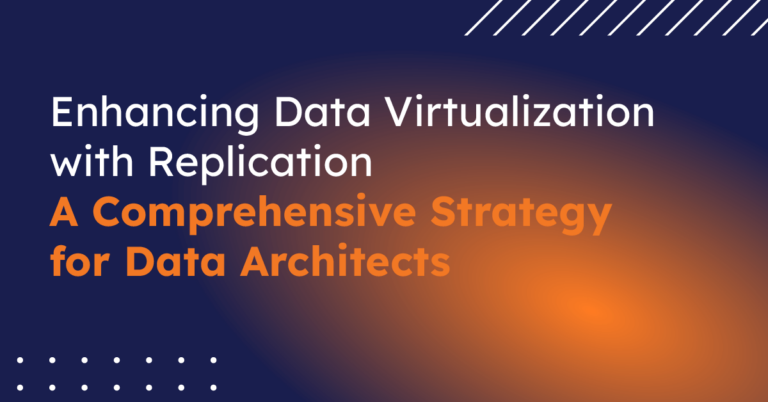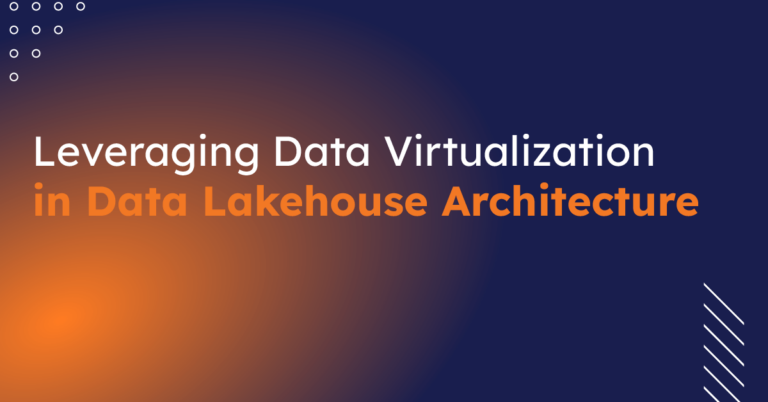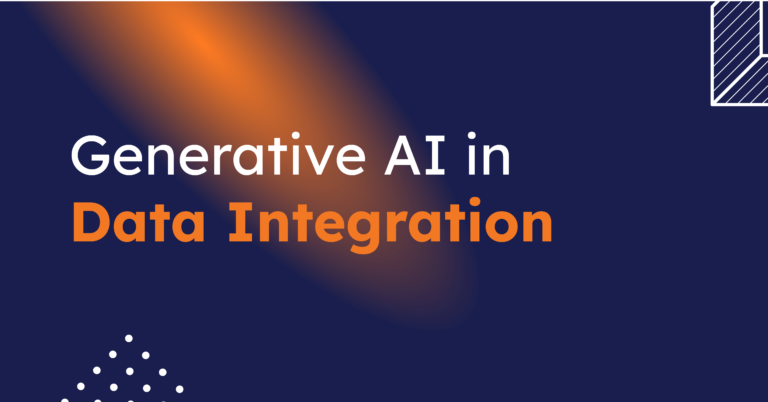
CData Software Acquires Data Virtuality to Modernize Data Virtualization for the Enterprise
Data Virtuality brings enterprise data virtualization capabilities to CData, delivering highly-performant access to live data at any scale.
Explore how you can use the Data Virtuality Platform in different scenarios.
Learn more about the Data Virtuality Platform or to make your work with Data Virtuality even more successful.
Insights on product updates, useful guides and further informative articles.
Find insightful webinars, whitepapers and ebooks in our resource library.
Stronger together. Learn more about our partner programs.
Read, watch and learn what our customers achieved with Data Virtuality.
In our documentation you will find everything to know about our products
Read the answers to frequently asked questions about Data Virtuality.
In this on-demand webinar, we look at how a modern data architecture can help data scientists to be faster and to work more efficiently.
Learn more about us as a company, our strong partner ecosystem and our career opportunities.
How we achieve data security and transparency
Consider a scenario where your enterprise grapples with an immense volume of data from a variety of sources, residing on diverse platforms. You are weaving your way through a maze of structured and unstructured data, attempting to glean value and maintain a competitive advantage. This scenario is not unique to your enterprise – it’s a common challenge faced by many businesses in today’s data-centric world. The good news is that the data ecosystem is in a state of continual evolution, and gaining a deep understanding of this evolution is the key to successful navigation.
A recent Forrester survey involving 3,627 decision-makers in data analytics highlighted the following predicament: over 25% of an organization’s data is duplicated today, leading to inconsistencies in reports across departments. When combined with an increasing demand for real-time data applications and insights, these factors coalesce to form a complex web of data management challenges.
Historically, data virtualization solutions have been marketed as the answer to these dilemmas – a promise to break data silos and integrate data from diverse sources, all in real-time. However, we’ve witnessed an intriguing shift in recent years: data lake engines, equipped with virtualization capabilities, have entered the data virtualization market. These engines, including Dremio, Starburst, and Trino, have started incorporating features that were once exclusively tied to data virtualization. This shift has led to a progressively blurred distinction between these innovative data lake engines and data virtualization providers. While this convergence represents rapid technological progression, it’s also creating a certain degree of confusion among users.
In addition to data lake engines, there are solutions that have recognized the limitations of data virtualization solutions, such as performance bottlenecks, a lack of data historization, and transformation. To address these issues, they’ve expanded their data virtualization offerings to incorporate a Data OS approach. These solutions prioritize enabling use cases over providing technologies. The overlap in terminology and messaging used by both data lake engines and these advanced solutions contributes to the confusion, making it increasingly difficult for users to distinguish the differences. Therefore, it’s crucial to delve deeper and understand the distinct differences between these emerging data lake engines and the solutions evolving from traditional data virtualization.
Query Acceleration and Data Virtualization serve different yet complementary roles in the data management landscape. They both aim to make data more accessible and usable, but they approach this goal from different angles.
Query Acceleration is primarily concerned with improving the performance of data processing. It employs various techniques to speed up the data retrieval process from big data systems, such as data lakes and complex data warehouses. Query Acceleration is generally applied in situations where there are massive amounts of data stored across diverse platforms, and quick, efficient access to this data is required.
Key features of Query Acceleration include:
While some query accelerators include the capability to delegate queries to connected data sources, they do not offer data integration capabilities.
On the other hand, Data Virtualization is more about integrating data from disparate sources and providing a unified, consistent view of the data to the end users. This means users can access and analyze data from multiple sources as if it were in a single location, without needing to know where the data is physically stored or how it’s formatted.
Key features of Data Virtualization include:
Emerging from the query acceleration sphere, data lake engines have taken note of this trend and started to incorporate some of these data virtualization features. This incorporation is not only shifting the market dynamics but also redefining the approach to data management in businesses. These engines are pushing the boundaries of technology and blurring the distinctions between traditional data virtualization providers and data lake engines, creating an intriguing landscape in the field of data management. It’s within this evolving context that users must chart their course, recognizing the strengths and limitations of each approach to make informed decisions.
In light of growing complexity and an expanding user base over the past decades, it’s more crucial than ever to embrace this philosophy of data integration and management as part of an operating system, rather than merely middleware or platform. Drawing inspiration from the concept of an operating system, a Data OS adopts similar principles by providing a user-friendly experience. It focuses on several key aspects:
By emphasizing these aspects, it aspires to offer a trusted solution for organizations seeking to benefit from more holistic data integration and management practices.
Navigating the data integration and management solution market can be complex due to similar marketing messages from various technology vendors. When comparing Data OS with data lake engines, one must understand their fundamentally distinct perspectives and focal points.
Data OS primarily focuses on the integration of data from a multitude of disparate sources, rendering them accessible and usable, irrespective of the storage system. These data integration features include critical operations such as data movement, data replication, change data capture (CDC), and extract-transform-load (ETL) capabilities.
On the other hand, vendors of data lake engines concentrate on enhancing data querying and retrieval speeds. Their focus is primarily on optimizing data access and retrieval in data lake environments. Some data lake engines even have the capability to delegate queries to connected data sources. However, despite their ability to connect to external data sources, they lack the comprehensive functionality to integrate the data from these sources, since they do not possess the data integration features mentioned above.
The absence of such features necessitates the maintenance of additional tools, which can lead to several challenges:
In light of these points, organizations should meticulously assess their specific needs and use cases when deciding between these distinct solutions. The choice between integration (as offered by Data OS) and connection (as provided by data lake engines) is not trivial and warrants careful consideration.
In the ever-evolving data management landscape, businesses face the task of navigating diverse data sources, replication, and integration. The advent of data lake engines and the evolution of Data OS provide promising solutions to these challenges. Yet, their overlapping features and marketing strategies can confuse users. To choose wisely, organizations must consider their unique needs – from real-time data analytics to seamless data integration. Although data lake engines excel in data retrieval speeds, they don’t match the comprehensive integration capabilities of Data OS. In this data-driven era, selecting the right solution depends on each organization’s specific goals and readiness to embrace new technology for efficient data management.
Like a Data OS, Data Virtuality eases data access and usability by abstracting away technical complexity. Born from first-hand experience, our solutions provide a comprehensive and integrative approach that empowers users and enables a diverse range of use cases.
The Data Virtuality Platform is trusted by businesses around the world, such as PGGM or Crédit Agricole, who use it to lower the costs associated with their data integration initiatives, increase the productivity of data teams and reduce time-to-market.
Start a free 30 day trial and discover how easy it is to use. Instant set-up. No credit card needed. For a more personalized experience, tailored to your unique use cases, book a demo with one of our friendly and knowledgeable data integration experts.

Data Virtuality brings enterprise data virtualization capabilities to CData, delivering highly-performant access to live data at any scale.

Discover how integrating data warehouse automation with data virtualization can lead to better managed and optimized data workflows.

Discover how our ChatGPT powered SQL AI Assistant can help Data Virtuality users boost their performance when working with data.

While caching offers certain advantages, it’s not a one-size-fits-all solution. To comprehensively meet business requirements, combining data virtualization with replication is key.

Explore the potential of Data Virtuality’s connector for Databricks, enhancing your data lakehouse experience with flexible integration.

Generative AI is an exciting new technology which is helping to democratise and accelerate data management tasks including data engineering.
Leipzig
Katharinenstrasse 15 | 04109 | Germany
Munich
Trimburgstraße 2 | 81249 | Germany
San Francisco
2261 Market Street #4788 | CA 94114 | USA
Follow Us on Social Media
Our mission is to enable businesses to leverage the full potential of their data by providing a single source of truth platform to connect and manage all data.